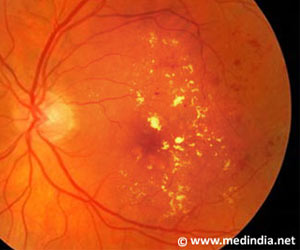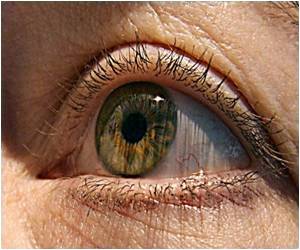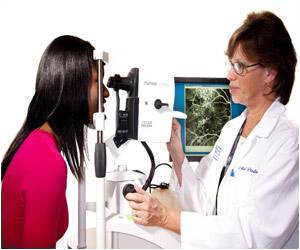What if you could hear shapes? or colors? These features are normally perceived visually, but using sensory substitution devices (SSDs) they can now be conveyed to the brain noninvasively through other senses.

SSDs are non-invasive sensory aids that provide visual information to the blind via their existing senses. For example, using a visual-to-auditory SSD in a clinical or everyday setting, users wear a miniature camera connected to a small computer (or smart phone) and stereo headphones. The images are converted into "soundscapes," using a predictable algorithm, allowing the user to listen to and then interpret the visual information coming from the camera.
With the EyeMusic SSD (available free at the Apple App store at http://tinyurl.com/oe8d4p4), one hears pleasant musical notes to convey information about colors, shapes and location of objects in the world.
Using this SSD equipment and a unique training program, the blind are able to achieve various complex. visual-linked abilities. In recent articles in Restorative Neurology and Neuroscience and Scientific Reports, blind and blindfolded-sighted users of the EyeMusic were shown to correctly perceive and interact with objects, such as recognizing different shapes and colors or reaching for a beverage (A live demonstration can be seen at http://youtu.be/r6bz1pOEJWg).
In another use of EyeMusic, it was shown that other fast and accurate movements can be guided by the EyeMusic and visuo-motor learning. In studies published in two prestigious scientific journals, Neuron and Current Biology, it was demonstrated that the blind can characterize sound-conveyed images into complex object categories (such as faces, houses and outdoor scenes, plus everyday objects) and could locate people's positions, identify facial expressions and read letters and words, (See YouTube channel http://www.youtube.com/amiramedilab for demonstrations.)
Despite these encouraging behavioral demonstrations, SSDs are currently not widely used by the blind population. However, in a recent review published in Neuroscience & Biobehavioral Reviews, the reasons that have prevented their adoption have changed for the better over the past few years. For instance, new technological advances enable SSDs to be much cheaper, much smaller and lighter, and they can run using a standard Smart phone. Additionally, new computerized training methods and environments boost training and performance.
Advertisement
When processing "visual' information" conveyed through SSD, it was shown by the researchers that congenitally blind people who learned to read by touch using the Braille script or through their ears with sensory substitution devices use the same areas in the visual cortex as those used by sighted readers. A recent example of this approach was just published in Current Biology, showing that blind subjects "see" body shapes via their ears using SSD equipment and training.
Advertisement
"The human brain is more flexible than we thought," says Prof. Amedi. "These results give a lot of hope for the successful regaining of visual functions using cheap non-invasive SSDs or other invasive sight restoration approaches. They suggest that in the blind, brain areas have the potential to be 'awakened' to processing visual properties and tasks even after years or maybe even lifelong blindness, if the proper technologies and training approaches are used."
Source-Eurekalert









